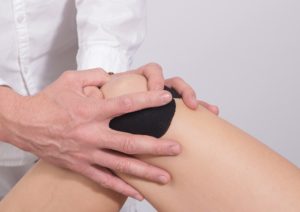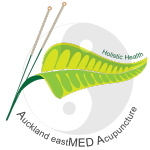 Rheumatoid arthritis (RA) is a chronic inflammatory joint disease, affecting 1% of adults in the developed world. According to arthritis New Zealand 2011, it is one of the most common forms of autoimmune disease and affects about 40,000 New Zealanders. The basic pathology in RA is the destruction of articular cartilage and subchondral bone by ectopic and hyperplastic synovium, resulting in permanently damaged joints. During the development of diseases, patients also suffer pain, swelling and morning stiffness of the affected joints.
Rheumatoid arthritis (RA) is a chronic inflammatory joint disease, affecting 1% of adults in the developed world. According to arthritis New Zealand 2011, it is one of the most common forms of autoimmune disease and affects about 40,000 New Zealanders. The basic pathology in RA is the destruction of articular cartilage and subchondral bone by ectopic and hyperplastic synovium, resulting in permanently damaged joints. During the development of diseases, patients also suffer pain, swelling and morning stiffness of the affected joints.
Although there are many therapies available to RA, about one third of patients fail to respond to the treatment. This results in the popularity of complementary and alternative medicine in the management of RA. Among them, acupuncture becomes an important method. As a natural method lacking side effects, acupuncture seems to be effective to relieve joint pains and relax body for RA. It may also boost the immune system to reduce symptoms as well as prevent other diseases.
In the current exploration of acupuncture treatment among RA patients, improvement of clinical symptoms had been observed in the majority of studies. Although acupuncture has not been shown to prevent joint damage, it helps with RA-related pain, as it does with other pain management. Stimulation of nervous system (brain) through certain points may cause the release of endorphin and other neurohumoral factors to inhabit the neurotransmitters in the processing of pain in the brain and spinal cord. It helps to increase local microcirculation to aid dispersal of swelling as well as reduce inflammation by releasing vascular and immunomodulatory factors. It may further inhibit the function of synovial mast cells which are substantially involved in the initiation of inflammatory arthritis. The impact of RA is associated with a number of psychological factors, including self-efficacy, coping responses and illness beliefs. Acupuncture, through a holistic model of treatment, may have psychological influence to improve quality of life for the clients.
According to Traditional Chinese Medicine theory (TCM), there are several theoretical constructs to form the view of body and its dysfunctions. The person is treated as a whole rather than the isolated symptoms of the disease. Lifestyle and environmental factors that triggered the problem also needed to be considered. All treatment is arranged according to TCM pattern diagnosis after analyse signs and symptoms for the individual. Acupuncture is one of the treatment methods that use needles to stimulate energy (qi) flow in the pathway (meridian system) within the body. By inserting thin needles into certain points on the “meridians”, it speeds up the circulation and clears the blockage of pathway. Consequently, the symptoms and the uncomfortable feeling will be reduced after regular treatments.
 RA in TCM belongs to the category of Bi Syndrome, which means the blockage due to pathogenic factors. Treatment focuses to reduce the pain in the acute stage by removing the blockage caused by three main pathogenic factors, wind, cold and dampness (heat also might be involved, especially due to wind-cold-damp retained in the body for long time). Treatment can be conducted 3-4 times a week depends on the symptoms up to 10 times as a course or till the pain is under controlled. In the chronic stage, treatment targets on strengthening the internal organs such as spleen, liver and kidney which relate to RA in TCM. It also helps to strengthen muscles, relaxes tendons and slows down the damage of joints. Treatment can be reduced to 1-3 times a week up to another 10 times. Needling, cupping, moxibustion and elctro-acupuncture are commonly used on the local and distal points of affected joints in both stages. Herbs also can be prescribed to enhance the acupuncture results.
RA in TCM belongs to the category of Bi Syndrome, which means the blockage due to pathogenic factors. Treatment focuses to reduce the pain in the acute stage by removing the blockage caused by three main pathogenic factors, wind, cold and dampness (heat also might be involved, especially due to wind-cold-damp retained in the body for long time). Treatment can be conducted 3-4 times a week depends on the symptoms up to 10 times as a course or till the pain is under controlled. In the chronic stage, treatment targets on strengthening the internal organs such as spleen, liver and kidney which relate to RA in TCM. It also helps to strengthen muscles, relaxes tendons and slows down the damage of joints. Treatment can be reduced to 1-3 times a week up to another 10 times. Needling, cupping, moxibustion and elctro-acupuncture are commonly used on the local and distal points of affected joints in both stages. Herbs also can be prescribed to enhance the acupuncture results.
For any inquiry, please contact Auckland eastMED acupuncture.
References
Arthritis New Zealand (2011). Rheumatoid Arthritis. Retrieved December 13, 2011 from http://www.arthritis.org.nz/wp-content/uploads/2011/07/4203artRAflyer_2-0.pdf
DePoy, E., & Gitlin, L. N. (2011). Introduction to research: Understanding and applying multiple strategies (4th ed.). St. Louis: Mosby.
Efthimiou, P., Kukar, M., & MacKenzie, C.R. (2010). Complementary and Alternative Medicine in Rheumatoid Arthritis: No Longer the Last Resort. HSS Journal, 6, 108–111.
Efthimiou, P., & Kukar, M. (2010). Complementary and alternative medicine use in rheumatoid arthritis: proposed mechanism of action and efficacy of commonly used modalities. Rheumatology international, 30, 571–586.
Isaacs, J.D., & Moreland, L.W. (2011). Fast facts: Rheumatoid arthritis (2nd ed.). Oxford, UK: Health Press.
Lawrence R.C., Helmick C.G. Arnett, F. C., Deyo, R., Felson, D. T., … & Wolfe, F. (1998). Estimates of the prevalence of arthritis and musculoskeletal disorders in the United States. Arthritis & Rheumatism, 41, 778-799.
Mulligan, K., & Newman, S. (2007). Rheumatoid arthritis. In A. Susan (Ed.), Cambridge Handbook of Psychology, Health and Medicine (2nd ed.). Cambridge; Cambridge University Press.
Pilkington, K. (2010). Anxiety, depression and acupuncture: A review of the clinical research. Autonomic Neuroscience: Basic and Clinical, 157, 91 – 95.
White, A., Foster, N.E., Cummings, M., & Barlas, P (2007). Acupuncture treatment for chronic knee pain: a systematic review. Rheumatology 46, 384–90.
Zan-Bar, T., Aron, A., & Shoenfeld, Y. (2004) Acupuncture therapy for rheumatoid arthritis. APLAR Journal of Rheumatology, 7, 207–214.
Acupuncture help to ease arthritis in three months: http://www.dailymail.co.uk/health/article-413322/Acupuncture-ease-arthritis-months.html
